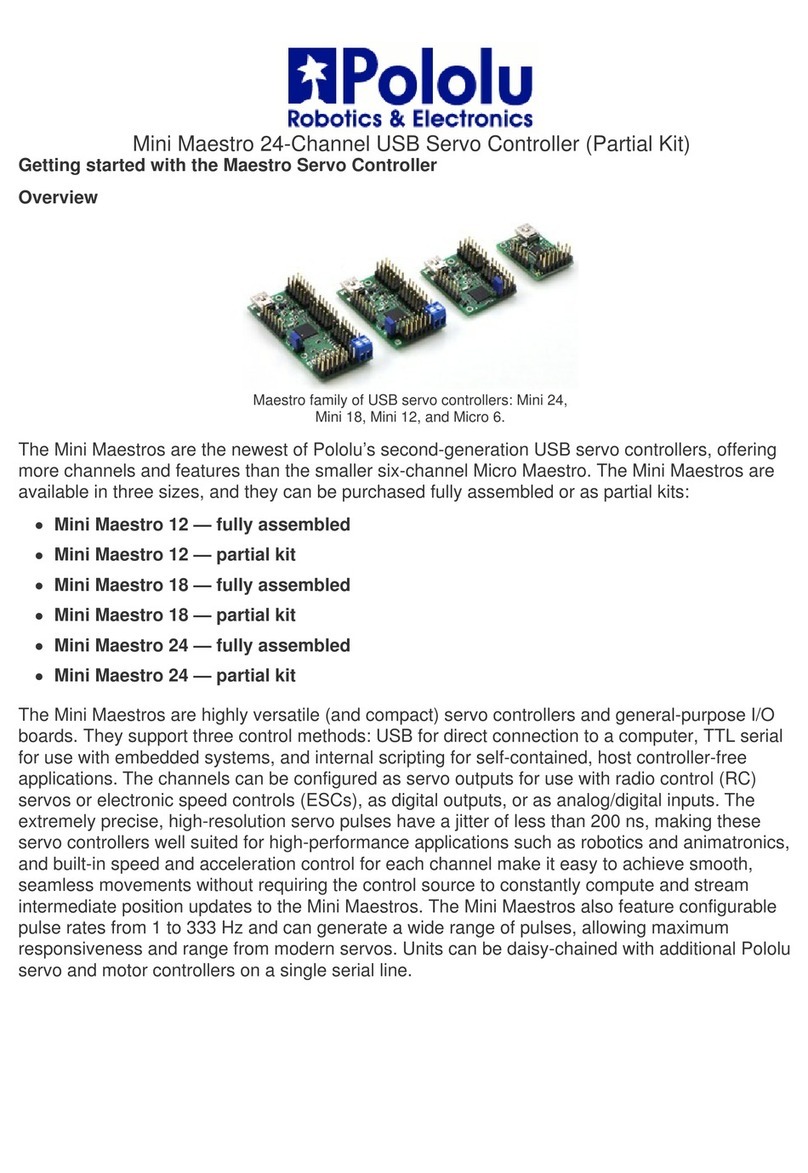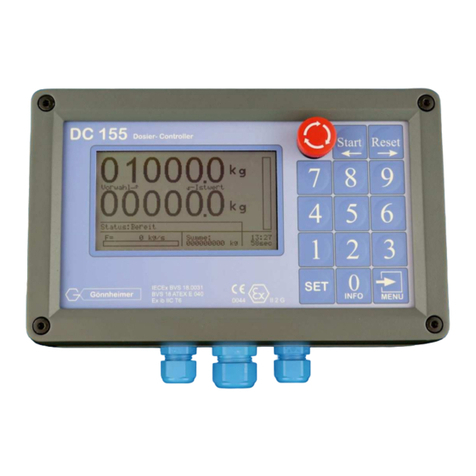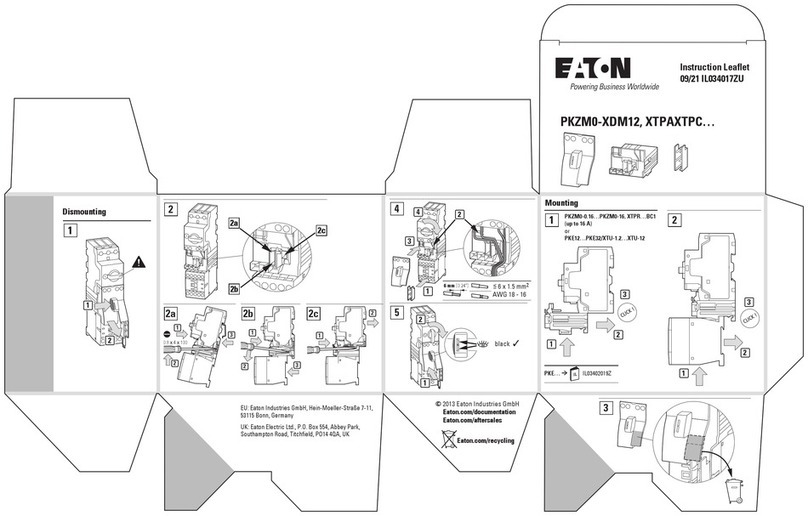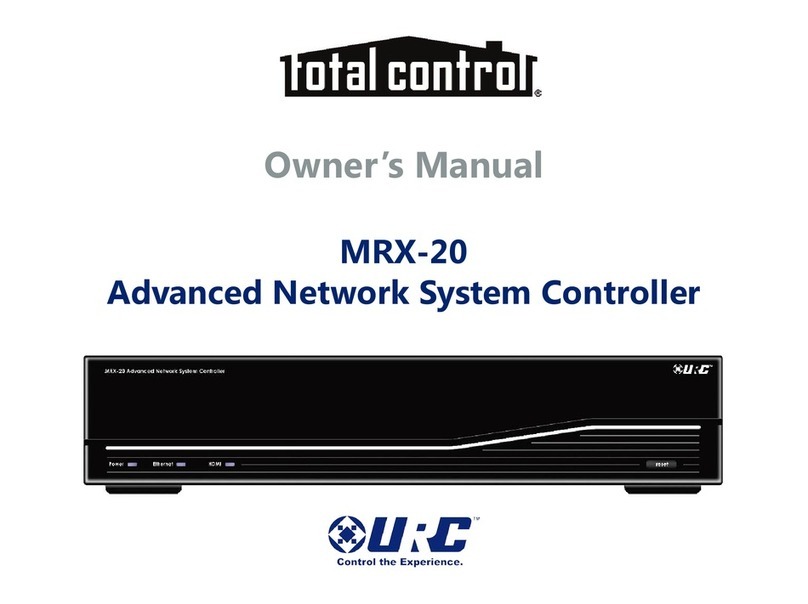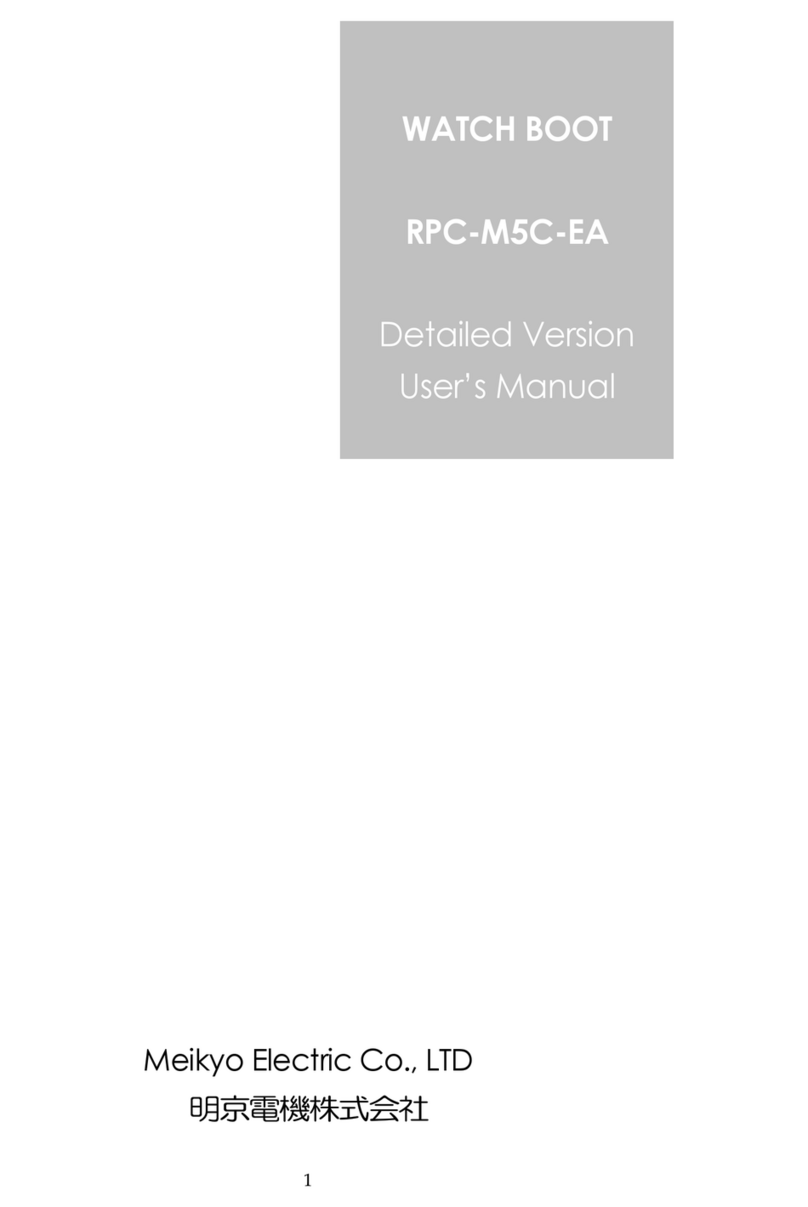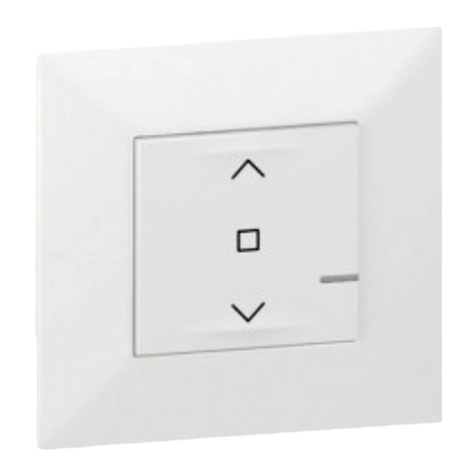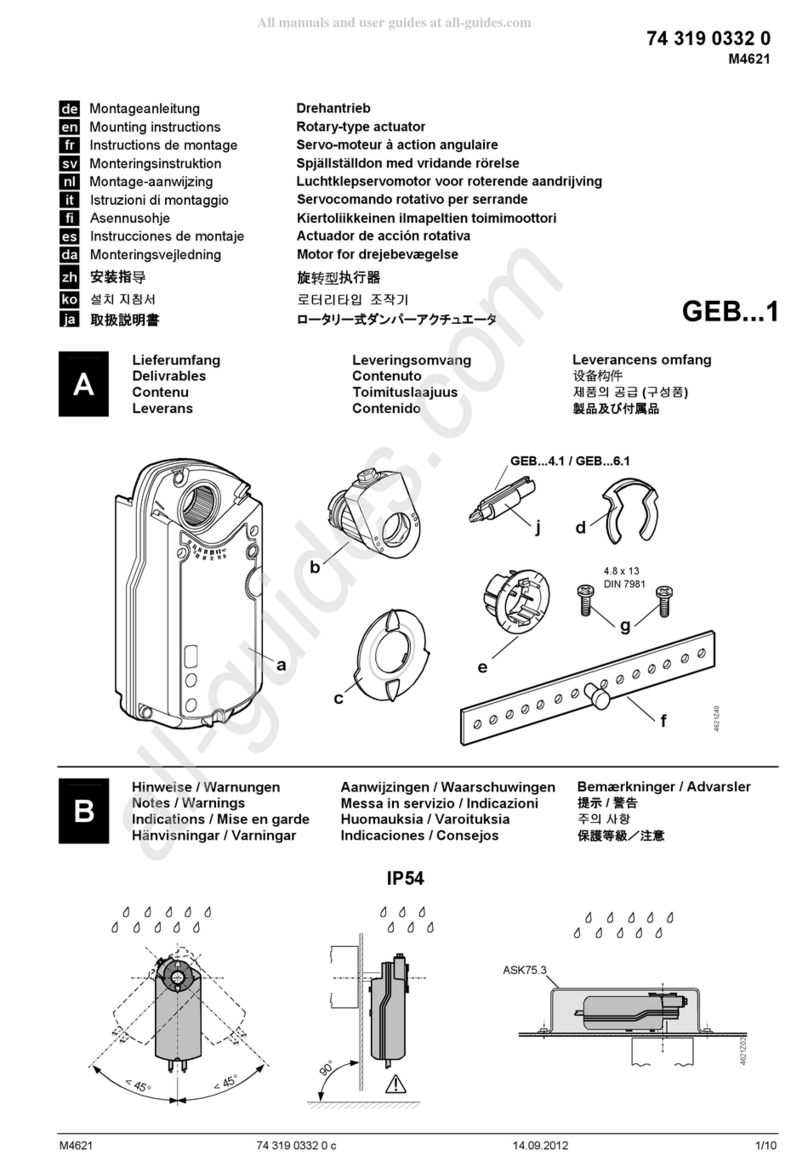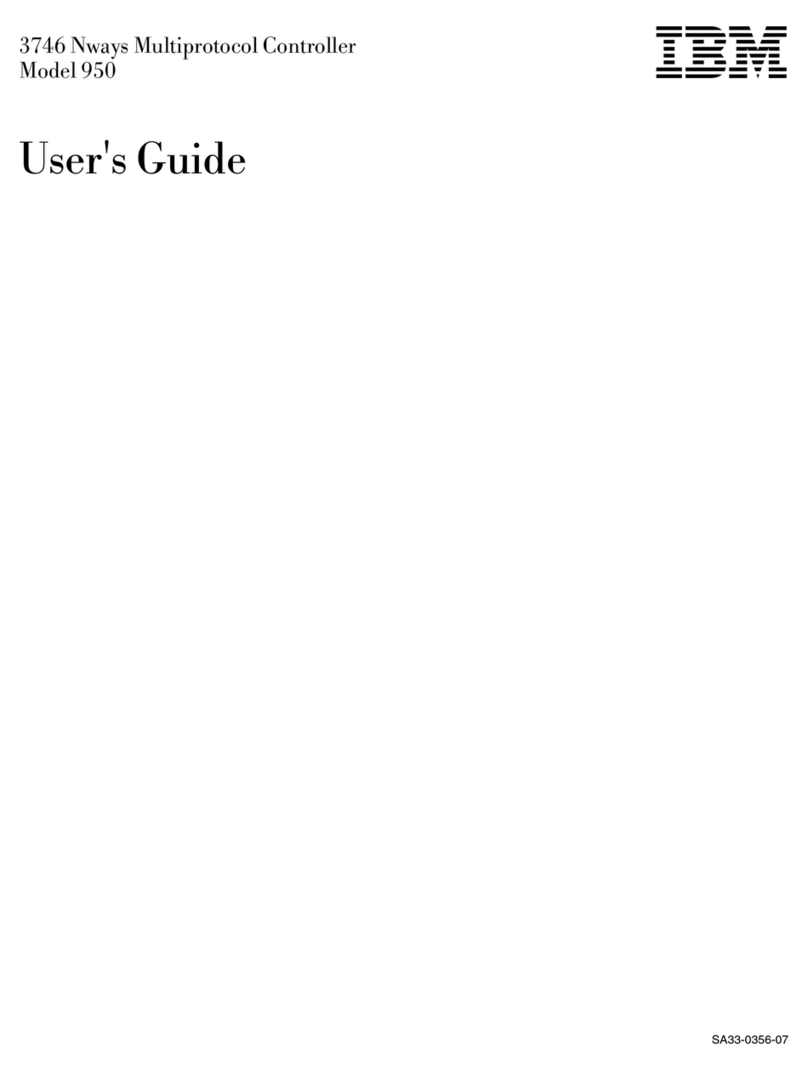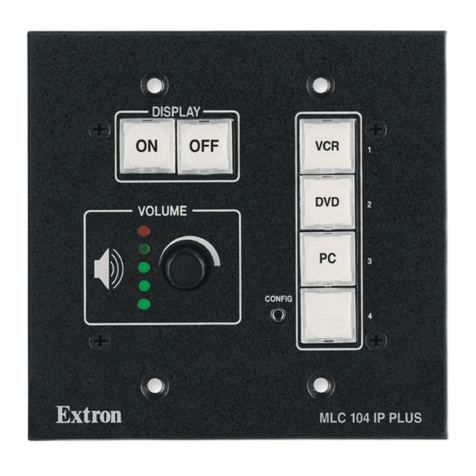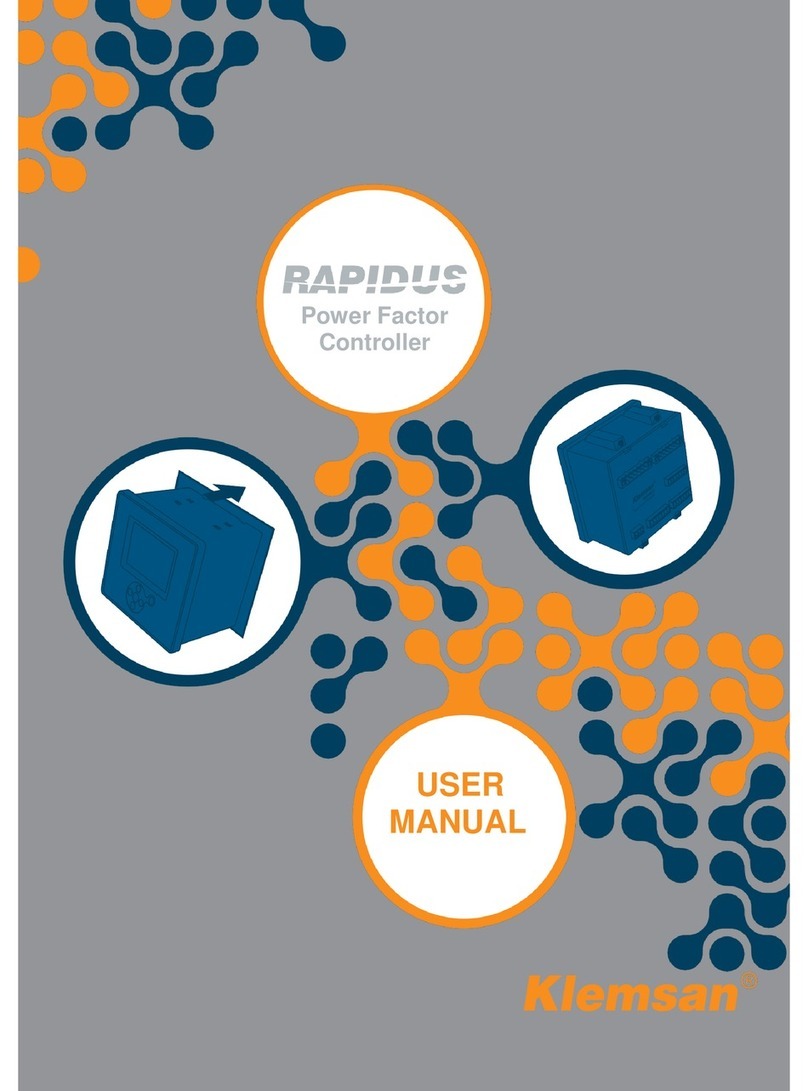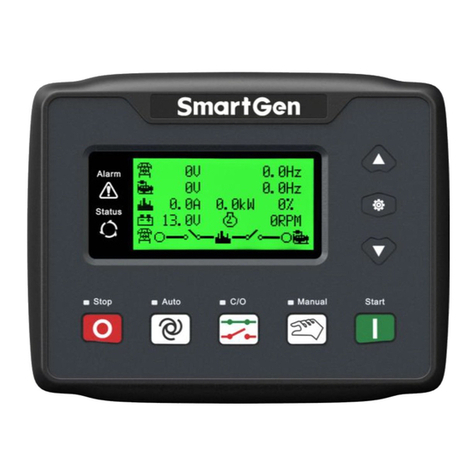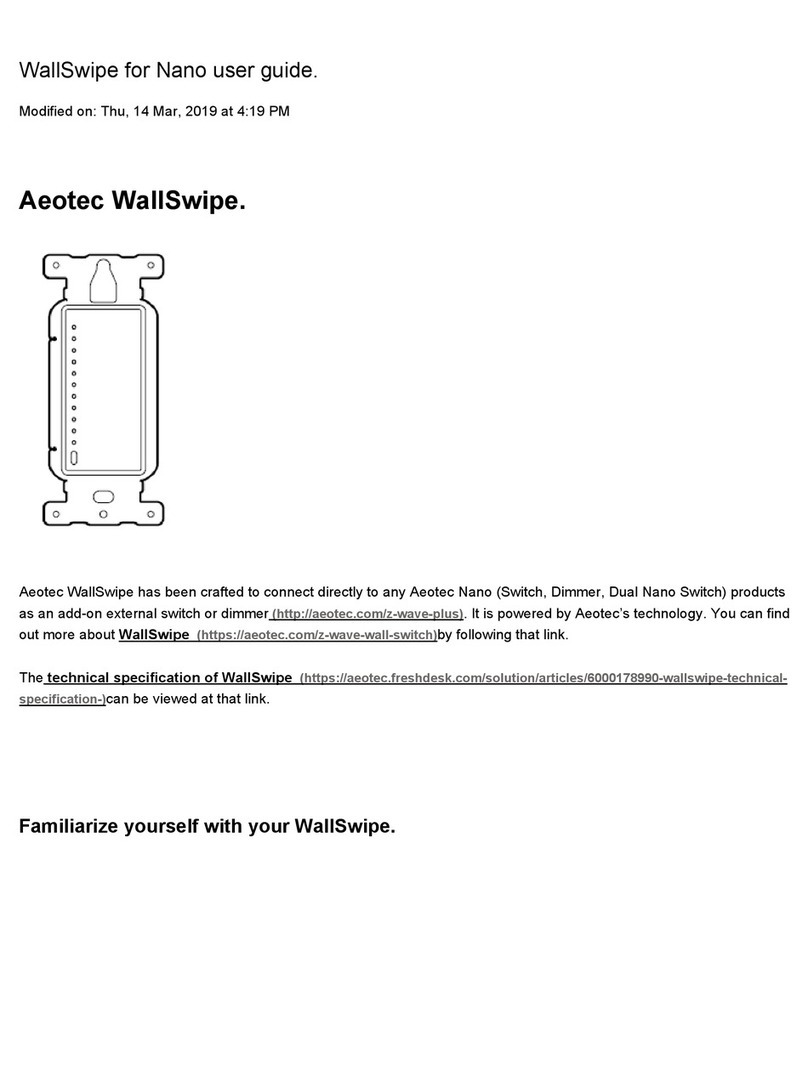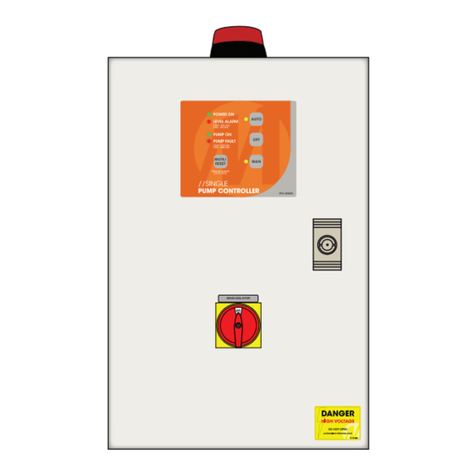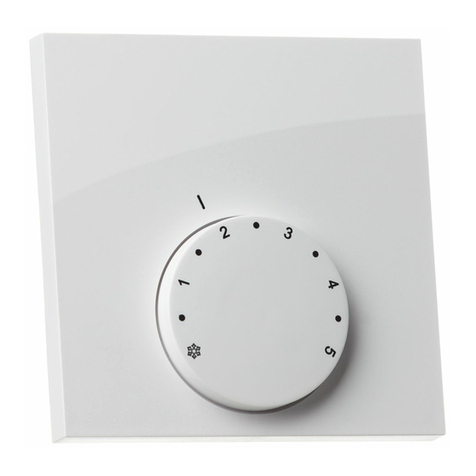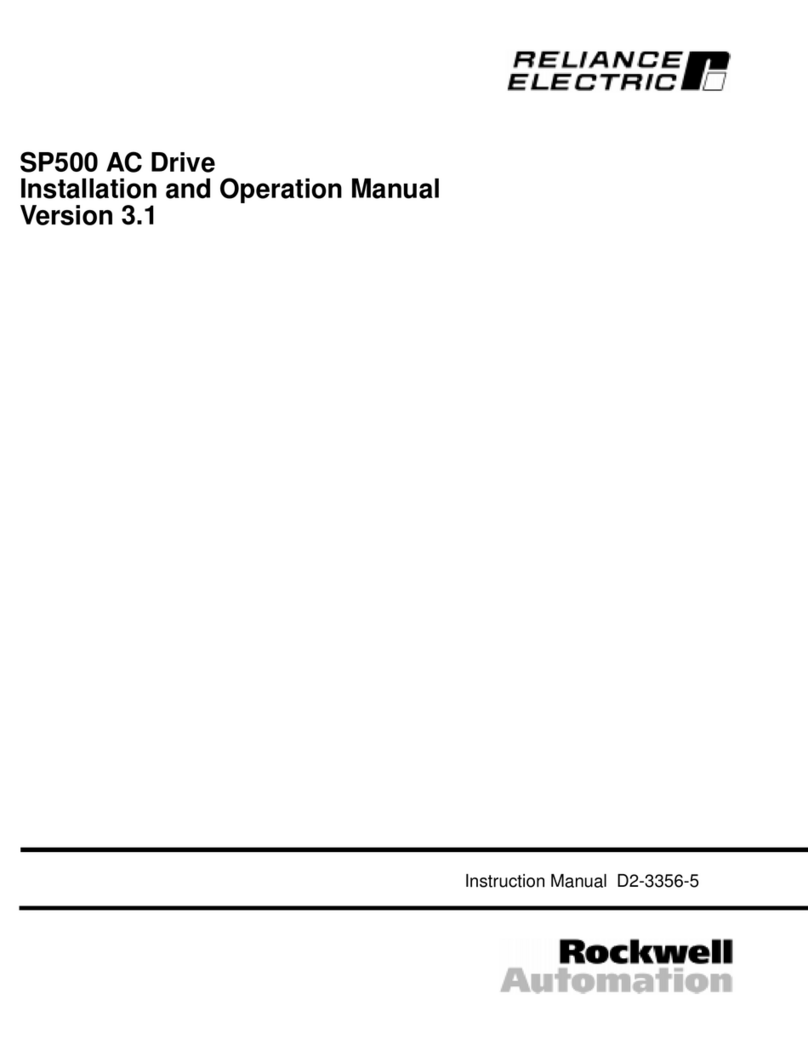RoentDek Crate Controller CCC1 User manual

RoentDek
HandelsGmbH
Supersonic Gas Jets
Detection Techniques
Data Acquisition Systems
Multifragment Imaging Systems
CAMAC Crate Controller (CCC1) Manual
(Version 6.2.90.2)

Page 2 of 29 CCC1 Manual (Version 6.2.90.2)
Mail Addresses:
Headquarter
RoentDek Handels GmbH
Im Vogelshaag 8
D-65779 Kelkheim-Ruppertshain
Germany
Frankfurt subsidiary
RoentDek Handels GmbH
c/o Institut für Kernphysik
Max-von-Laue Str. 1
D-60438 Frankfurt am Main
Germany
Web-Site:
www.roentdek.com
Product names used in this publication are for identification purposes only and may be trademarks of their respective companies.
All rights reserved. Technical changes may be made without prior notice. The figures are not binding.
We make no representations or warranties with respect to the accuracy or completeness of the contents of this publication

CCC1 Manual (Version 6.2.90.2) Page 3 of 29
Table of Contents
1INTRODUCTION ......................................................................................................................................................5
1.1 FEATURES..............................................................................................................................................................5
1.2 APPLICATIONS.......................................................................................................................................................5
1.3 COMPONENTS ........................................................................................................................................................5
1.4 OPERATING MODES...............................................................................................................................................5
1.5 POWER REQUIREMENTS .........................................................................................................................................5
2HARDWARE INSTALLATION...............................................................................................................................7
3PROGRAMMING THE CAMAC SYSTEM...........................................................................................................9
3.1 FUNCTION CODE....................................................................................................................................................9
3.2 SUBADDRESS .........................................................................................................................................................9
3.3 STATION NUMBER .................................................................................................................................................9
3.4 STATUS INFORMATION ..........................................................................................................................................9
3.5 COMMON CONTROL SIGNALS ................................................................................................................................9
3.6 EVENT INFORMATION..........................................................................................................................................11
3.7 LAM CONTROL...................................................................................................................................................11
3.8 SELECTING LAM SOURCE....................................................................................................................................12
3.9 SELECTING INTERNAL LAM SOURCE...................................................................................................................13
4EVENT CONTROL .................................................................................................................................................15
5SELECTING THE RESET SOURCE....................................................................................................................17
6SELECTING THE IO ADDRESS OF THE IO CARD (ISA IO-CARD ONLY) ...............................................19
7CCC1 COMMANDS AND ADDRESSES ..............................................................................................................21
7.1 INTERNAL FUNCTION CODES ...............................................................................................................................21
7.2 I/O CARD CONTROL -REGISTERS ........................................................................................................................21
7.3 I/O CARD COMMAND...........................................................................................................................................21
7.4 I/O CARD STATUS REGISTER INFORMATION BYTE ..............................................................................................21
8USING THE CCC1 IN COBOLDPC......................................................................................................................23
8.1 THE DAQ MODULE .............................................................................................................................................23
8.1.1 The CAMAC Information File (CAMAC.CIF)............................................................................................23
8.1.2 Parameters used by the Standard CCC1-DAQ module ..............................................................................24
8.1.3 The Header Information of the ListMode File............................................................................................24
8.1.3.1 The Standard CoboldPC Header...............................................................................................................................24
8.1.3.2 The CCC1 User Defined Header...............................................................................................................................25
8.2 THE DAN MODULE .............................................................................................................................................25
9FINAL NOTES:........................................................................................................................................................27
LIST OF FIGURES..........................................................................................................................................................29

Page 4 of 29 CCC1 Manual (Version 6.2.90.2)

CCC1 Manual (Version 6.2.90.2) Page 5 of 29
1Introduction
You have purchased RoentDek CAMAC Crate Controller (CCC1) product.
The RoentDek-CCC1 is a double-width CAMAC Crate Controller. This controller conforms to all applicable CAMAC
specifications, except that it controls only station number 1-16. The controller comes with an integrated simple Event-
Controller and a PC-IO card.
If you need additional information please contact [email protected].We are permanently improving our
documentations.
1.1 Features
•Provides an interface between a PC and a CAMAC Crate
•Acts as main crate controller
•Controls modules in station numbers 1-16
•Data Readout Rate up to 120kB/s
•Support LAM
•Support Q and X response
•Simple Event-Controller implemented
1.2 Applications
•Laboratory automation
•Process control
•CAMAC I/O in a PC-controlled system
1.3 Components
•CCC1 Module
•I/O board for PC (ISA)
•Connection cable (CCC1 to I/O card)
1.4 Operating Modes
All commands and data information are passed between the IO-card and the CCC1
in binary form, not ASCII characters.
1.5 Power requirements
+6V →up to 700mA
−6V →up to 100mA
Figure 1.1: CCC1 Front Panel

Page 6 of 29 CCC1 Manual (Version 6.2.90.2)

CCC1 Manual (Version 6.2.90.2) Page 7 of 29
2Hardware Installation
Locate a free ISA slot in your PC.
Make sure the power cord is removed from the computer to verify that the main board of your PC is really without
any power!
Before inserting the CCC1-IO card please select a proper IO address (see chapter 6). Usually the default IO address (Hex
340) will function well. If the IO address is occupied by other ISA cards you have to change it. How to change the IO
address is described in Chapter “Selecting the IO Address of the IO Card”. After applying the IO address insert the card
smoothly into the free ISA slot of your PC. Close the PC and apply the power to the computer. If the computer will not start
the usual way, please select an other IO address!
Usually the card will not be detected by the “Hardware Wizard” of Windows 2000 or Windows XP and will also not be
displayed as a device in the “Device Manager” but even though the card will work correct in your PC especially with the
CoboldPC software.
Please be aware that it is not possible to access IO addresses directly in Operating System like Windows NT, Windows 2000
or Windows XP. In Dos, Windows 9x and WindowsMe it is possible. The CoboldPC Software handles this issue correct. If
you are writing your own DAQ-System software please contact RoentDek to help you handling this IO subject on the
specified operating systems.

Page 8 of 29 CCC1 Manual (Version 6.2.90.2)

CCC1 Manual (Version 6.2.90.2) Page 9 of 29
3Programming the CAMAC System
The following provides a brief introduction to the parameters involved in programming a CAMAC system. A more detailed
description is available in the IEEE Standard 583-1975, Molecular Instrumentation and Digital Interface System.
The CAMAC standard provides guidelines for control of the 25-station CAMAC crate by a crate controller residing in station
24 and 25 (or usually the two highest stations numbers in the crate).
Communication between the crate controller and the modules is accomplished via dataway commands. Three parameters
common to the dataway commands are: FUNCTIONCODE, SUBADDRESS and STATIONNUMBER. The commands
can be separated into three major groups: the read commands, the write commands and the control commands. The crate
controller generates the necessary timing signals to execute the commands.
Status information is conveyed from the module to the crate controller via the LookAtMe (LAM) line and the Q response
and command accepted busses. Each station in the crate has a LAM line. The module may use the LAM to asynchronously
inform the crate controller that it requires attention. The Q and X bus are used by the addressed module to convey status
during the dataway command cycle.
There are three common control signals on the CAMAC dataway. These are INITIALIZE, CLEAR and INHIBIT.
3.1 Function Code
The Function code (F), ranging from 0 to 31 (decimal), determines which of three command groups a particular command
belongs to.
The read command group includes commands with F ranging from 0 to 7 (decimal). Execution of a read command initiates
the transfer of data from the addressed module to the crate controller. Data are transferred on the 24 bit read bus (R1-R24).
Modules which do not use the full 24 bit word, such as a 12 bit ADC, will normally use the lower segment of the word, and
the unused segment will be read as zero.
The write command group consists of those commands with F greater than 15 (decimal) and smaller than 24 (decimal).
Execution of a write command initiates the transfer of data from the crate controller to the addressed module. Data is
transferred on the 24 bit write bus (W1-W24).
The control command group function code includes: 7 < F < 16 (decimal) and 23 < F < 32 (decimal). No data are
transferred on the read or write bus during control command executions, however, one bit of status information can be sent
to the crate controller via the Q response line. An example is the F(8) Test LAM command. The addressed module may
return the state of its LAM request to the crate controller via the Q response line. Other commands in this group include the
F(24) Disable, the F(25) Initiate and the F(26) Enable command.
3.2 Subaddress
The subaddress (A), ranging from 0 to 15 (decimal) are used to access different sections of an addressed module. An example
is an eight-channel TDC which is read by the F(0) A(i) command, where i can range from 0 to 7 (decimal). This provides
access to all eight channels data registers with the F(0) read group 1 register function code.
3.3 Station Number
The station number (N) specifies which slot is intended to receive the command being executed. N can range from 1 to 23
(decimal). With the RoentDek CCC1 N can range from 1 to 16 (decimal). Internal features of crate controllers typically use
N=30.
3.4 Status Information
During a dataway command execution cycle, the addressed module uses the Q response (Q) and X command accepted (X)
bus lines to convey status information to the crate controller. X=1 is generated by the addressed module if it recognizes the
command being executed as one that it is equipped to perform. The Q response may reflect the status of any selected feature
in the module.
The LAM signal may be used by a module to inform the crate controller that it needs attention. The LAM signal reflects the
status of the LAM request in the module. The LAM request reflects the state of the LAM status and whether or not LAM’s
are enabled in the module. LAM’s are enabled within a module by an enable command or by setting a bit in a LAM mask
register. LAM requests are disabled at power up.
3.5 Common Control Signals
The Initialize (Z) sets registers or control functions in a module to an initial state, particularly when power is turned on.

Page 10 of 29 CCC1 Manual (Version 6.2.90.2)
The Inhibit (I) disables features for duration of the signal. The Inhibit line can be set by the crate controller or a module. An
example of this is using a Timing Pulse Generator to provide a time base for a programmed time, disabling the counters.
The Clear (C) clears the registers or resets flip-flops.
The use of the Z, C and I is dependent on the individual module.

CCC1 Manual (Version 6.2.90.2) Page 11 of 29
CCC1 Front Panel
On the front panel of the CCC1 is divided into 3 areas of interest.
3.6 Event Information
BUSY LED
BUSY Test Point
Figure 3.1: Busy LED and Test Point
•
BUSY LED
is indicating the CAMAC Busy bus activity.
•
BUSY Test Point
(TTL)
is for oscilloscope monitoring of the CAMAC busy bus line.
3.7 LAM Control
Figure 3.2: LAM Input/Output, LED and Test Point
•
External LAM
in (TTL)
is equivalent an external LAM. That means this is not a pulse-signal input, it’s a level-signal input. After receiving the
Reset-Signal (RES-OUT) this level should be removed until the next event.
•
LAM LED
will go on if an Event is detected from all sources (EventIn, External LAM in and Internal LAM). The LED will go
out, when a Reset Event is sent by the computer or the LAM condition is no longer valid from CAMAC LAM.
•
LAM Test Point
(TTL)
is for oscilloscope monitoring of the LAM signal
•
LAM Out
(TTL)
displays the state of the LAM signal (can be used for different triggering methods)
The state is the “ORed”
external LAM
in and the internal LAM (from CAMAC)
LAM Out
LAM Test Point
LAM LED
External LAM In

Page 12 of 29 CCC1 Manual (Version 6.2.90.2)
3.8 Selecting LAM source
To select the LAM source you have to open the side panel of the crate controller. You should see the following picture.
Please note that the marked jumpers are two 3pin jumpers. Two of them are closed.
Internal
LAM
External
LAM
Figure 3.3: Jumper setting for selecting LAM source

CCC1 Manual (Version 6.2.90.2) Page 13 of 29
3.9 Selecting internal LAM source
To select an internal LAM make sure you’ve selected the internal LAM as described in “Selecting LAM source”. Beside this
you can select up to two internal LAM sources. The LAM sources should be placed each in one of the two blocks (Q1, Q2).
The source is selected by applying a switch to the needed station number. (N=1 is CSL1, N=2 is CSL2…). As mentioned
earlier, the crate controller can only address the first 16 station numbers. The status bit of the CCC1 will indicate which block
has initiated the LAM.
Figure 3.4: Jumper settings for selecting the internal LAM source

Page 14 of 29 CCC1 Manual (Version 6.2.90.2)

CCC1 Manual (Version 6.2.90.2) Page 15 of 29
4Event Control
Event In
Figure 4.1: CCC1 front view for the Event-Controller
•
Event In
(NIM)
signals the start of an event. After receiving an event the input will be blocked till a Reset is sent either by External
Reset In or from the computer.
•
Event Out
(NIM)
are regenerated
Event In
signals (gated by the internal event controller!). The signal is delayed about 100ns. The
width of the signal can be adjusted by the
Event Width Out
potentiometer.
•
Event Width Out
(potentiometer) controls the width of the
Event Out
signals.
Range is from about 50ns up to 4.5µs.
•
LAM OUT Delay
(potentiometer) controls the fine pitch of the delay between
Event In
and
LAM Out
.
•
LAM Out Delay Range
(switch) controls the range of the delay between
Event In
and
LAM Out
Range: 1.0µs – 10.0µs
10.0µs – 100.0µs
Set this delay to the slowest conversion time of your inserted CAMAC modules to make sure that the modules are
not read out before conversion has finished!
•
External Reset In
(TTL)
can reset the
Event Control
unit if the internal switch is set to “External Reset”.
•
Internal Reset Out
(TTL)
State of the Reset of the Event Controller, no matter if the Reset will be initiated by
External Reset In
or the
internal Reset (PC initiated).
•
Reset Indicator
LED is on when the internal Bridge is set for internal (PC initiated) reset of the Event Controller.
Gated Event Out
External Reset In
Internal Reset Out
Width of Event Out
LAM Out Delay
LAM Out Delay Range
Reset Indicator

Page 16 of 29 CCC1 Manual (Version 6.2.90.2)

CCC1 Manual (Version 6.2.90.2) Page 17 of 29
5Selecting the Reset source
To select the source of the Reset signal, you have to open one side panel of the CCC1. If the displayed switch is in “closed”
position, the Reset is set to internal (means computer initiated) Reset. In this state the Reset-Indicator LED is on.
To select external reset, disconnect the switch. The Reset-Indicator LED is off.
Internal
Reset set
Figure 5.1: Jumper settings for selecting the Reser source

Page 18 of 29 CCC1 Manual (Version 6.2.90.2)

CCC1 Manual (Version 6.2.90.2) Page 19 of 29
6Selecting the IO Address of the IO Card (ISA IO-Card only)
Please ignore any description on the switch.
The right description is the one you can see here!
T
he Default address of the ISA-Bus IO-Card is
as specified in the right picture (HEX 340)
Remember that the address lines A00-A02 can
not be selected and are as default in state ON.
The example shows how to get this switch-
pattern.
HEX 3 4 0
Binary 011 0100 0000
or 01101000 000
Remove now the last 3 digits (A00-A02) and
invert the pattern.
10010111
1 represents now the ON state of a switch,
0 represents OFF.
Figure 6.1: DIP switch settings for selecting the IO address on the ISA IO card

Page 20 of 29 CCC1 Manual (Version 6.2.90.2)
Table of contents
